Home> Company News> Key Points of Design for Integral Cages of Double Direction Thrust Tapered Roller Bearings
- Address4 Pemimpin Drive #03-09, Lip Hing Industrial Building
- Factory AddressSingapore 576147
- WorktimeSeg - Sex (9.00 - 18.00) Sáb (9: 00-12: 00)
- Phone(Working Time)(65) 8257 8518
- Phone(Nonworking Time)(65) 8257 8518
- Fax(65) 6258 7399
Key Points of Design for Integral Cages of Double Direction Thrust Tapered Roller Bearings
NOVEMBER 02, 2022Two-way thrust tapered roller bearing structure and its cage processing difficulties
The two-way thrust tapered roller bearing is a separable bearing. Its structure consists of two races and one shaft ring. The shaft ring, race and roller cage assembly can be installed separately. This type of bearing is suitable for working conditions with low speed and large biaxial axial load, but it can not limit the radial displacement of the shaft. It is widely used in rough rolling mills.
The conventional cage used in the structural bearing is composed of a retainer seat and a cover. The retainer seat is drilled in the radial direction and the pocket is fixed. When the assembly is assembled, the retainer cover is clamped on the outer diameter surface of the retainer seat, and then the retainer mount And the cage cover radial drill pin, the pin is used to connect the two.
Traditional cages have some defects in processing, mainly as follows:
1) The retainer seat needs to be drilled in the radial direction and the pocket of the pocket. Due to the poor radial rigidity of the cage, the deformation of the retainer seat during drilling and boring is large, and the machining accuracy is poor; the retainer mount and the retainer cover are along the outer diameter. The pin hole for the face drilling assembly has a small diameter and is difficult to process.
2) The difference between the outer diameter and the inner diameter of the cage cover is small, that is, the wall of the cage cover is thin, and the turning and clamping deformation is large.
3) The cage consists of a seat, a cover and a pin. As the number of parts increases, the overall reliability of the cage decreases.
2 Overall cage characteristics and design points
Based on the machining defects existing in the conventional combined cage, the design is improved into an integral cage. After the main parameters of the two-way tapered roller bearing (roller half cone angle, roller diameter, roller length, number of rollers) are determined, The design of the integral cage is available.
2. 1 Cage structure
As shown in Figure 3, the overall cage structure is drilled and boring along the axial direction, and the pocket of the retainer (by the seat ring) is extended by a step to restrict the roller from falling off the race; An expansion groove is milled on one side end beam. When the sleeve is fitted, the roller is first placed in the pocket, and the expansion groove is pressed by a special tool to force the groove to extend toward the roller side, thereby locking the roller. Through the improvement of the structure of the cage, the roller and the cage form a component after assembly, which is convenient for the host.
Install the bearings.
2. 2 Cage design points
2. 2. 1 Material selection
The two-way thrust tapered roller bearing integral cage requires materials with good mechanical cutting performance and good ductility. Manganese yellow copper ZCuZn38Mn2Pb2 or aluminum bronze ZCuAl10Fe3 can be used. In addition, it is necessary to select a suitable casting surface hardness. According to practice, ZCuAl10Fe3 casting hardness is 80 ~ 120HB, the effect is better, ZCuAl10Fe3 can be used as the cage material.
2. 2. 2 Pocket taper angle
The pocket taper angle is consistent with the roller cone angle, and the extended step is also consistent with the roller cone angle, ensuring that the tapered roller size head and the pocket gap are consistent, and the differential sliding of the roller during the bearing operation is reduced.
2. 2. 3 Pocket steps
One side of the cage pocket (by the seat ring) has a step that blocks the roller from falling off toward the seat side in the axial direction, and the step is designed to be a trapezoid with good milling performance; the step is located in the center of the pocket, and the length is about 0. 7L w (roller length), height is 2 ~ 3 mm; the extension of the step to block the roller lock is 0. 6 to 1 mm is more suitable.
2. 2. 4 Locking expansion slot
A lock roller expansion groove is milled on one end of the cage (on the side of the shaft), and the groove has a 5° to 10° expansion guide groove. When the bearing is assembled, a special expansion tool is used to force the expansion groove. Extending to the roller side, locking the roller; the length of the slot is (0.15 to 0.20) L w , and the width is about 0 of the width of the beam. 55 times, the expansion groove has a depth of 2 to 3 mm.
2. 2. 5 Guiding steps
The retainer has a guiding step on the inner diameter side, and the end surface of the step and the opposite portion of the beam are machined to form a circular arc groove to reduce the contact area with the shaft ring, and store a small amount of lubricating oil to reduce friction; the other end surface has a step on the outer diameter side. The arc groove is machined on the opposite part of the beam; the inner diameter step and the shaft ring are in contact with the guide cage according to different bearing installation positions; or the outer diameter step and the seat ring end surface are in contact with the guide cage to rotate, it should be noted that the cage guide gap should be smaller than the pocket The gap between the hole and the roller avoids interference.
2. 2. 6 Cage thickness
The two end faces of the cage pocket are parallel to each other and are close to the half cone angle of the roller. The difference between the roller half cone angle and the pocket end surface inclination angle should be within 1°, and the thickness of the cage is about (0. 55 ~0. 70). When D w (roller diameter), the rigidity of the cage and the bag capacity of the pocket to the roller can be ensured.
3 Improvement Effect
Two-way thrust tapered roller bearings are changed into integral cages, the copper alloy blanks are cast once, the strength is good, the bore is machined axially, the surface roughness RA of the pocket can reach 1. 6μm, the rigidity of the cage is good, the deformation is small, and the dimensional accuracy is easy to guarantee; the circular groove of the cage end face and the ring contact can store a small amount of grease, reduce the friction and heat, and the complete bearing noise is small.
Through the product 927/351 Q/hcya Cage (the overall structure) for dimensional inspection, pocket width size to meet technical requirements, the difference is not greater than 0. The thickness change is not more than 0. MM, diameter roundness is not more than 0.10 mm, cage size consistency is better. But the monolithic cage structure is complex, the processing equipment requirements are high, the pocket-hole processing must be in the CNC Machining center drilling, milling, low processing efficiency, high cost.


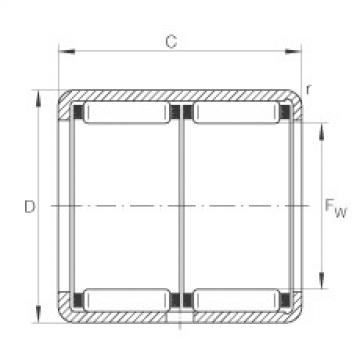 FAG Nadelhülsen - HK2030-ZW
FAG Nadelhülsen - HK2030-ZW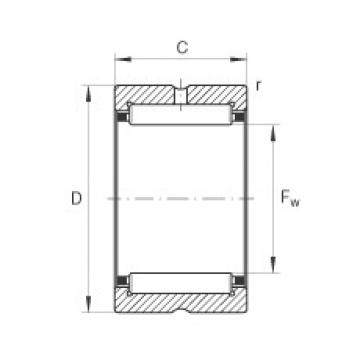 FAG Nadellager - RNA6902-XL
FAG Nadellager - RNA6902-XL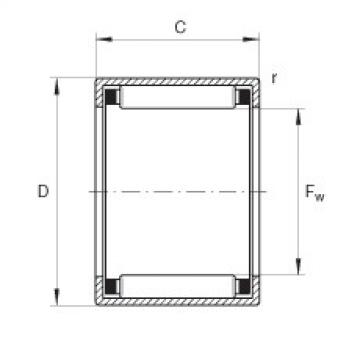 FAG Nadelhülsen - HK2016
FAG Nadelhülsen - HK2016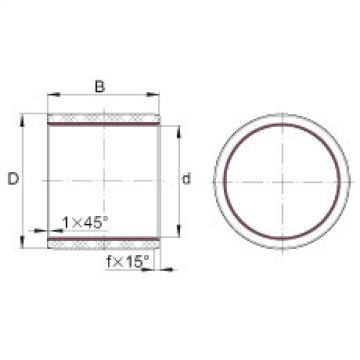 FAG Gleitbuchsen - ZWB202415
FAG Gleitbuchsen - ZWB202415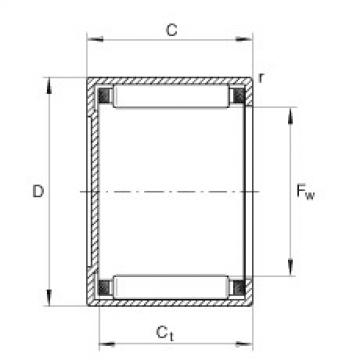 FAG Nadelbüchsen - BK2016
FAG Nadelbüchsen - BK2016